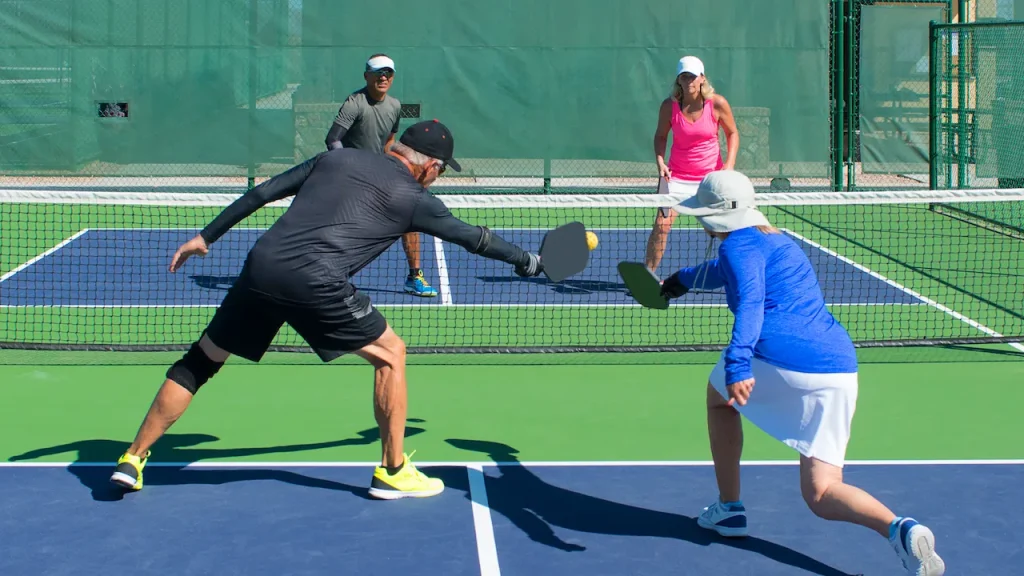Carmel Bans Pickleball: A Community Divided Over Noise
In the scenic coastal town of Carmel, California, a surprising conflict has emerged in recent weeks, pitting pickleball enthusiasts against residents seeking peace and quiet. The Carmel City Council has voted to permanently ban pickleball at Forest Hill Park—the only public location in the city where the sport could be played—making it the first municipality in California to enact such a prohibition. This decision comes after months of complaints from nearby homeowners who described the distinctive “popping” sound of pickleball paddles hitting balls as an intrusive nuisance that echoed throughout their otherwise tranquil neighborhood.
The controversy began when the constant noise from pickleball games—a sport that has surged in popularity, especially among seniors and retirees—prompted initial complaints from residents. The city council initially responded with a temporary ban while they explored potential compromises, including requiring players to use soft paddles and balls that would produce less noise. However, at a pivotal November 4th council meeting, several residents testified that the temporary ban had already transformed their neighborhood into a more peaceful environment. Kimberly Edwards, a local resident, noted that the absence of pickleball had even led to “an uptick in tennis players,” particularly younger individuals returning to the courts. Despite appreciating the quieter atmosphere, Edwards expressed concern about enforcement challenges should the council opt for equipment restrictions rather than an outright ban.
The dilemma facing Carmel officials went beyond simple noise complaints to questions of enforcement practicality and community priorities. Edwards pointedly addressed the council with her perspective: “You guys are all in this position to protect us. That’s your number one goal. That’s what your job is—not to placate these pickleball enthusiasts.” Her statement crystallized the tension between accommodating recreational interests and protecting neighborhood tranquility. On the other side of the debate, competitive pickleball player Barbara Lang advocated for a middle ground, suggesting that “quiet” pickleball could coexist with neighborhood peace if given a chance. Speaking on behalf of many absent enthusiasts, Lang urged the council to consider less restrictive alternatives before implementing a complete prohibition.
Ultimately, the council determined that compromise solutions would create more problems than they would solve. Council member Alissandra Dramov cut through the debate by stating they were “just overcomplicating it in the name of compromise,” and acknowledged the reality that Forest Hill Park simply wasn’t suitable for pickleball. Mayor Dale Byrne concurred, expressing regret but emphasizing practical constraints: “It’s just a really difficult thing to enforce. And I can’t ask the [police] chief to send his people up there… It’s really sad that we can’t figure this out.” This sentiment reflected the council’s reluctance to burden law enforcement with monitoring recreational equipment specifications or mediating disputes between residents and players.
This Carmel controversy highlights broader tensions arising in communities across America as pickleball’s explosive popularity collides with existing neighborhood dynamics. The sport—a hybrid of tennis, badminton, and ping-pong—has become the fastest-growing activity in the United States, particularly appealing to older adults seeking moderate exercise and social interaction. Its accessibility and social nature have created dedicated communities of players, but the infrastructure hasn’t always kept pace with demand. As players convert tennis courts or seek new playing spaces, conflicts over noise, access, and resource allocation have emerged in many communities, though few have resulted in outright bans.
For now, Carmel officials will draft an ordinance to formalize the pickleball prohibition at Forest Hill Park, with two additional hearings scheduled where opponents can voice their concerns before final implementation. The case represents a microcosm of how communities navigate competing interests in shared public spaces—balancing recreation, residential tranquility, enforcement capabilities, and community harmony. While pickleball enthusiasts in Carmel will need to seek alternatives outside city limits, the conversation continues about how growing recreational trends can be accommodated within established residential areas without disrupting quality of life. As one council member noted, sometimes geographic realities simply don’t align with every recreational need, regardless of how popular or beneficial the activity might be.


